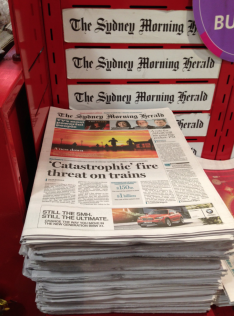The commercial verdict on the compact
What will Fairfax’s move to compact size for The Age and The Sydney Morning Herald do for the market? Nic Christensen finds out.
Last June Fairfax dropped one of the most significant announcements in its history. Amid the flurry of media coverage detailing a major restructure, the loss of 1,900 jobs, the introduction of paywalls and the closure of printing plants, one major change overshadowed them all. Fairfax’s decision to abandon its 180-year heritage as a broadsheet newspaper publisher and move to a smaller tabloid or ‘compact’ version would impact not only readers, journalists and the publisher itself but also the many advertisers who still spend money on print.
“Handling change of this magnitude is difficult,” says Alex Pekish, group media investment director at Aegis Media, whose clients include Fairfax Media. “Given all the circumstances I think they’ve done a good job and delivered a great product.”


It will take Fairfax six months to adjust to the new size. Given their attempts so far in that time they will probably piss more people off than they will make happy. The big question is will the new size work? Yes it can, but it will take a major rethink of the design and story use to satisfy old readers and attract new ones. Anyone interested in the future of newspapers will hope they get it right.
I really like the new format FWIW, clean pages, easy to read. As long as they don’t go tabloid in content as well as format I think it will do the paper, its readers and advertisers good.
This article could have been one paragragh. Costs are reduced by printing on a smaller format and with a lower wordcount per page you need fewer journalists, subbies and the infrastructure to support them – something they’ve already taken into account (so definitely not six months adjustment).
The smaller format should have been adopted decades ago.
If newspapers want to survive, their online version should load in seconds, like the local Leader Newspaper, not the 80 meg! 20 mins download to iPad the Herald Sun takes on ADSL. Then if you check your emails, or there is a glitch, the whole lot is lost and it’s another 20 min download!!
Tell em they’re dreamin.
They have ditched some flaky inventory, so buyers will find less distress space. The plain tabloid structure is more flexible so they can manage yield better over the book.
The extremely obvious issue is that, aside from the SMH’s Kate McClymont, Fairfax is not producing much in the way of distinctive news content. Formats don’t change that.